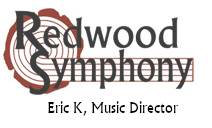Dmitry Shostakovich
Cello Concerto No. 1
Cellist Mstislav “Slava” Rostropovich (1927 – 2007) was an important influence on many of the great composers of the twentieth century, encouraging artists from Benjamin Britten to Sergei Prokofiev to write works for cello. In 1943, Rostropovich entered the Moscow Conservatory of Music, where he studied composition with Dmitri Shostakovich. Having become friends with the composer, Rostropovich hoped that he might ask Shostakovich to write a work for cello. This proved to be more difficult than he expected. As the cellist later described it:
“Once, when talking with Nina Vasilyevna, Dmitri Dmitriyevich’s late wife, I raised the question of a commission: ‘Nina Vasilyevna, what should I do to make Dmitri Dmitriyevich write me a cello concerto?’ She answered, ‘Slava, if you want Dmitri Dmitriyevich to write something for you, the only recipe I can give you is this–never ask him or talk to him about it.'”
So Rostropovich kept his silence and waited. Eventually Shostakovich did write his First Cello Concerto, in July of 1959. His stated inspiration was Prokofiev’s Symphony-Concertante for cello and orchestra, which Rostropovich had persuaded Prokofiev to complete while he was working as Prokofiev’s secretary at the Conservatory. So, indirectly, it seems Rostropovich did influence Shostakovich to write the concerto. The cellist picked up the work from Shostakovich in Leningrad that month and four days later played it–from memory–at the composer’s dacha in Komarovo. Rostropovich premiered the work with the Leningrad Philharmonic in October, 1959.
Shostakovich described the first movement, Allegretto, as a “jocular march,” but it is a frenetic rather than happy jocularity. The movement contrasts a questioning four-note motto with a brisk motif consisting of a descending third repeated twice, followed by four notes descending chromatically. The solo cello trades these themes back and forth with the full orchestra and, notably, with the single brass instrument scored in this work, the French horn. This sets up a musical relationship between cello and horn that continues throughout the piece, with the horn “reminding” us of a thematic point while the soloist takes off on a flight of variation. Like the Prokofiev work that inspired the concerto, this movement features a few abrupt bangs on the timpani that both punctuate and end the section.
The next three movements are played without separation, beginning with the Moderato second movement, in A-B-A form. Once again the horn takes the lead, stating the elegiac first theme after an introduction by the strings, then the solo cello takes over, alternating with the string sections and the clarinet. The “B” section becomes ever more agitated, segueing back to the opening “A” melody played fortissimo by the full orchestra. Then the solo cello takes over in harmonics, aided by an ethereal celesta. A soft drum roll denotes the break between this section and the cadenza.
The solo Cadenza, at a full 148 bars, is long enough to constitute a movement on its own. This section ties together the entire work, beginning with material from the second movement, accelerating to musical musings on the first movement, and developing to foreshadow the rhythmic intensity of the finale. The last movement, Allegro con moto, includes a musical quotation from Stalin’s favorite song, “Suliko,” which Shostakovich also used in his musical satire on the Soviet system, “Rayok” (1948 – 1957). In both cases, the quotation is used ironically. The mood in this movement is once again grimly frenetic, augmented by timpani and strident winds in their high register. The horn brings back the four-note motto from the opening movement to begin the coda. The opening and finale themes intertwine as the soloist shines in a virtuosic whirlwind of scales and octaves.
